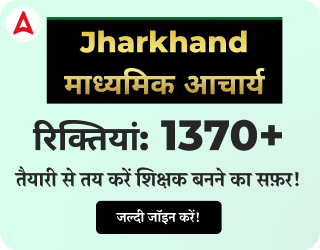Table of Contents
The Gujarat State Eligibility Test (GSET) 2024 is a golden opportunity for aspirants aiming to become Assistant Professors in the College/Universities of Gujarat State. GSET Examination will be going to held on 1 December 2024 for 33 subjects. As the Examination is near by, candidates must start the right preparation which can transform their efforts into a rewarding result. Here we are going to guide through the essential GSET preparation tips, focusing on Paper I and Paper II, helping them devise a winning strategy.
GSET Preparation Tips
Success in GSET 2024 requires more than just cramming textbooks; it’s about smart preparation and strategic focus. Here are some essential Preparation tips for GSET exam:
- Know the Syllabus Inside-Out: Begin preparation journey by diving deep into the GSET syllabus. Understanding which topics are essential for both Paper I and Paper II is first step toward success.
- Structured Study Plan: Create a flexible yet firm timetable that gives ample time to cover both papers. Prioritize topics based on their weightage and their comfort level with each.
- Practice, Practice, Practice: Practicing with Previous Year Papers not only familiarizes them with the question pattern but also highlights frequently asked topics.
- Stay Conceptually Strong: GSET is not just about rote learning. Strengthen their conceptual foundation, especially for Paper I, which tests reasoning and teaching aptitude.
- Mock Tests are a Must: Taking regular mock tests is the secret to improving speed, accuracy, and confidence. It also helps them identify areas that need more attention.
Gujarat SET Preparation Strategy for Paper 1 and Paper 2
To excel in the Gujarat State Eligibility Test (GSET), candidates must adopt a strategic approach to prepare for both Paper 1 and Paper 2. Paper 1 focuses on general teaching and research aptitude, requiring candidates to master concepts such as teaching methodologies, research methods, communication, and reasoning skills. Paper 2 is subject-specific, demanding in-depth knowledge of the chosen subject.
GSET Paper I Strategy
GSET Paper I tests candidate teaching aptitude, research skills, reasoning abilities, and more. It’s a game of general knowledge, analytical thinking, and quick decision-making. Here’s how to prepare:
- Teaching & Research Aptitude: Grasp the core concepts of pedagogy, learning styles, research methodologies, and the latest educational trends.
- Logical & Analytical Reasoning: Make reasoning puzzles a daily habit. The more candidate solve, the sharper their problem-solving skills become.
- Reading Comprehension: Practice reading comprehension passages to improve speed and understanding. Focus on extracting key information quickly.
- ICT and Data Interpretation: Brush up on basic computer knowledge and work on interpreting data tables, charts, and graphs effectively.
- People, Environment & Higher Education System: Stay up-to-date with national and international environmental issues and government policies affecting higher education.
GSET Paper II Strategy
GSET Paper II requires candidate to delve deeply into their chosen subject out of 33 subjects. Candidate must be expertise in their subject. Here’s how we can approach it:
- Break Down the Syllabus: Divide the syllabus into smaller, digestible chunks. Work through each topic methodically, ensuring no stone is left unturned.
- Deep Dive into Reference Material: Use textbooks and scholarly articles to get a comprehensive understanding of each topic. Don’t just skim the surface—understand each concept deeply.
- Regular Practice: Work on subject-specific questions daily. Practice will not only help them identify weak areas but also familiarize them with the types of questions asked.
- Clarify Core Concepts: Some topics might be more challenging than others. Spend extra time on these, using additional resources like online tutorials to strengthen their understanding.
GSET Exam Pattern 2024
The GSET Exam Pattern for 2024 is designed to assess candidates efficiently with a straightforward format for both Paper 1 and Paper 2. Paper 1 consists of 50 questions, each worth 2 marks, totaling 100 marks, and candidates have 1 hour to complete it. Importantly, there is no negative marking for incorrect answers. Paper 2 follows a uniform pattern across all 33 subjects, featuring 100 questions with a total of 200 marks, to be completed in 2 hours, also with no negative marking.
| Paper | Number of Questions | Total Marks | Marks per Question | Duration | Negative Marking |
|---|---|---|---|---|---|
| Paper 1 | 50 | 100 | 2 | 1 hour | No |
| Paper 2 | 100 | 200 | 2 | 2 hours | No |
What Are the Tips for the GSET 2024 Exam?
- Understand the Exam Pattern: Familiarize themselves with the structure and marking scheme.
- Manage Time Wisely: Allocate time based on question difficulty and marks.
- Prioritize Easy Questions: Tackle simpler questions first for quick marks.
- Read Instructions Carefully: Follow specific instructions to avoid mistakes.
- Stay Calm and Focused: Maintain composure and avoid panic.
- Use the Process of Elimination: Narrow down answer choices if unsure.
- Keep an Eye on the Clock: Monitor time to ensure timely completion.
- Review Answers: Check and revise answers if time allows.
- Stay Hydrated and Energized: Eat well and stay hydrated before the exam.
- Follow Exam Rules: Adhere to all guidelines and instructions provided.
| GSET Important Links | |
| GSET Previous Year Question Papers | GSET Cut Off Marks |
| GSET Syllabus 2024 | GSET Application Form 2024 |




 HTET Preparation Tips for Last 15 Days
HTET Preparation Tips for Last 15 Days
 KVS Recruitment 2025 Notification Releas...
KVS Recruitment 2025 Notification Releas...
 We Are Hiring Teaching SME for Adda247, ...
We Are Hiring Teaching SME for Adda247, ...




